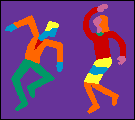Dancing the Transference: The Power of the Unconscious Across our Lives!
Presenter: Dr. Elisabeth Crim
Thelma McMillen + Center for Discovery:
Southbay Network for Professionals Treating Addiction
INFO and RSVP: https://www.torrancememorial.org/Medical_Services/Alcohol_and_Drug_Treatment/For_Health_Professionals/Professional_Events_2018.aspx
Location: Thelma McMillen Center, Torrance Memorial Center, Torrance, CA
CHECK IN: 8:30
PRESENTATION: 9:00-10:00am
1 CEU, CAADAC (2S-02-489-0714) , CAADE
Free CEU: Psychologists, MFTs, LCSWs, CAADACs
Jamie Gelbart: 310-257-5758 | Jamie.Gelbart@tmmc.com
Inger Hauge: 714-307-1491 | Inger.Hauge@CenterForDiscovery.com
EDUCATIONAL OBJECTIVES
1. Participants will be able to describe 2 cues for relational transference and countertransference activation.
2. Participants will be able to demonstrate a body-based approach to coping with/managing mind-body transference and countertransference activations.
3. Participants will be able to discuss transference and countertransference dynamics that may arise in treatment with a client or patient (regardless of theoretical and therapeutic orientation).
COURSE DESCRIPTION
The ultimate good and safe treatment of a client or patient requires the therapist or treatment provider to have awareness of the underlying processes that are at play in the therapeutic relationship. In this CE offering, Dr. Crim speaks to the role of the unconscious relational dynamics of transference and counter-transference in the process of ethical and effective therapeutic relationship. Transference will be explored as an unconscious organizing activity of the relational attachment dynamics between therapist and client, based in both the Intersubjective Approach to Psychodynamic Psychotherapy (Stolorow) and the neurobiological theories of relational attachment and/or transference (including: Schore, Siegel, Porges). Dr. Crim will define transference, delve into recognizing transference in yourself and your clients as it presents over your lifespan personally and professionally, and discuss how to more confidently use transference to deepen or enhance therapy with various populations regardless of your theoretical and therapeutic orientation.

